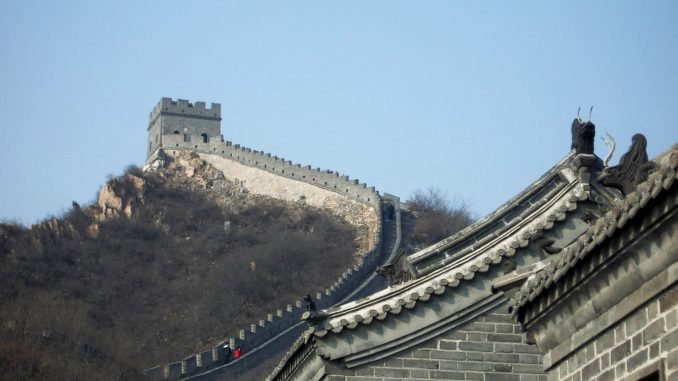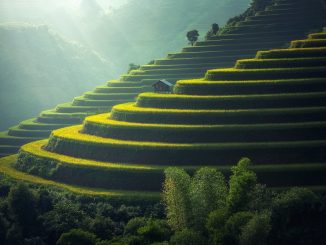
The Great Wall of China is one of The New7Wonders of the World, and with its 13,171 miles (21,196 km) of length is actually a series of fortifications, earth mounds, and small connecting walls rather than simply a single large wall. Constructed of stone, wood, brick, compacted earth, as well as other materials, the Great Wall of China is built along the roughly east to west line representing the historic northern border separating China from the nomadic tribes of the Eurasian Steppe. Several walls were constructed (or being constructed) in the 7th century BC and were later joined to form the beginnings of what we now know as the Great Wall. Since its original construction the majority of the wall has been added to, altered, modified, and rebuilt all the way to the Ming Dynasty which is the majority of what we see today. In December of 1987 the Great Wall of China was added to the List of UNESCO World Heritage sites.

Stretching from Dandong in the east to Lop Lake in the west, the Great wall has served a variety of purposes throughout its life. Among its historic uses are border control, imposition of duties on transported goods, regulation and control of migration and immigration, and signaling. The defensive capabilities of the wall have included at different times, barracks for troops, garrison stations, and watch towers. Using the natural topography of the land, the Chinese were able to place themselves in perfect position to survey the land, as well as save valuable resources where transportation of materials was difficult.
In the early 16th century rumor of the Great Wall started to circulate in Europe after Europeans reached Ming China by ship, even though it would be a century before a European would set eyes on the wall. The earliest known European account the wall was the descriptions contained in João de Barro’s 1563 writing “Asia”. The Frist reputable recorded instance of a European entering China via the Great Wall was in 1605 when Bento de Góis, the Portufuese Jesuit brother ventured from India to the northwestern Jiayu Pass, the first pass at the west end of the Great Wall near the city of Jiayuguan. It was not till China opened its borders following the first and second Opium Wars that the Great Wall started to become a tourist attraction. Foreign merchant’s stories of the wall only heightened the reputation and entrenched the mythology for generations to come.
Great Wall of China Facts
- The Great Wall of China is not visible from the moon.
- The official length is 13,170.7 miles (21,196.18 km).
- The structure is more than 2,300 years old
- The Ming Great Wall crosses nine provinces and municipalities which include Liaoning, Hebei, Tianjin, Beijing, Inner Mongolia, Shanxi, Shaanxi, Ningxia, and Gansu.
- The Badaling section is the most visited portion of the wall with 63,000,000 visitors in 2001 alone.
- Nearly 1/3 of the wall has disappeared due to erosion and removal for a variety of purposes.
- Since the Ming Dynasty was overthrown in 1644 no work has been done to the wall for military purposes.
Travel Tips
- It takes about 2 hours to get to the Great Wall from downtown Beijing.
- You can stay near the wall and enjoy it early in the morning before the crowds arrive but lodging often leaves much to be desired.
- Set aside at least a day for a hiking trip. This is especially true if you want to get away from the crowds.
- There are different sections of the Great Wall that may be better for your personal trip. Some require serious hiking and others are great for children or elderly tourists not able to hike as well.
- Allow two to three hours for your visit when in Badaling (the most popular) section.
- There are plenty of people selling small trinkets and it gets loud. Don’t expect a peaceful and quiet visit without several hours of hiking.
- Take snacks and water with you. They can be purchased on site but the cost is quite high.
- Dress for the weather and be prepared for it to change a bit. It can get cold and windy on the nicest of days and rain often comes with lightning.


